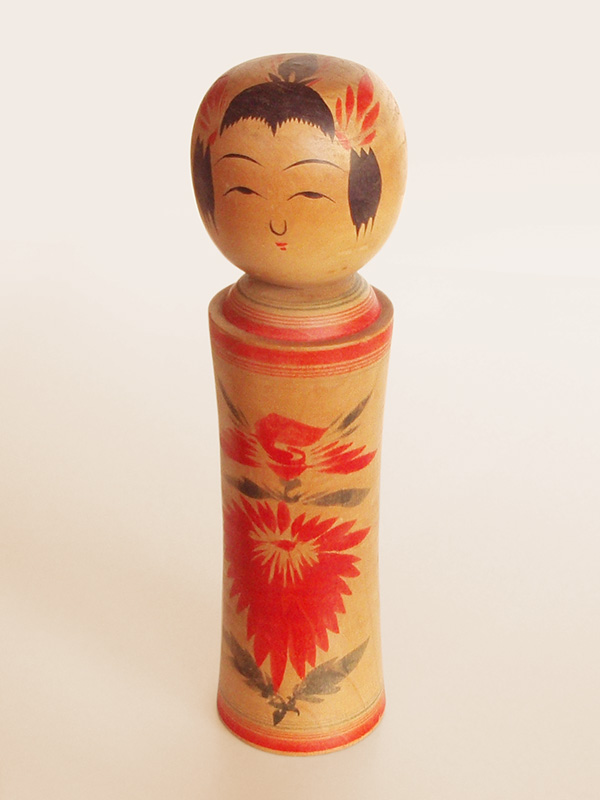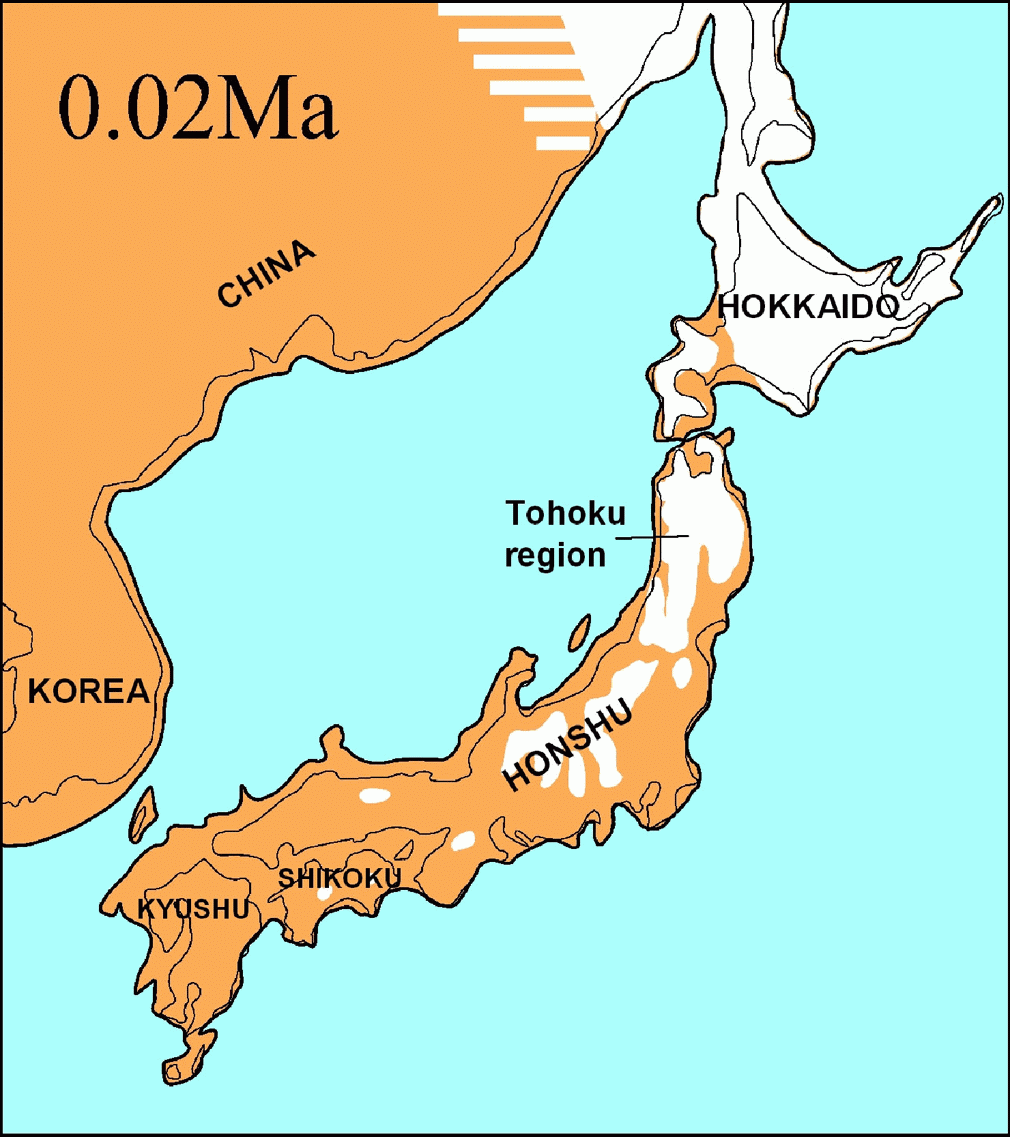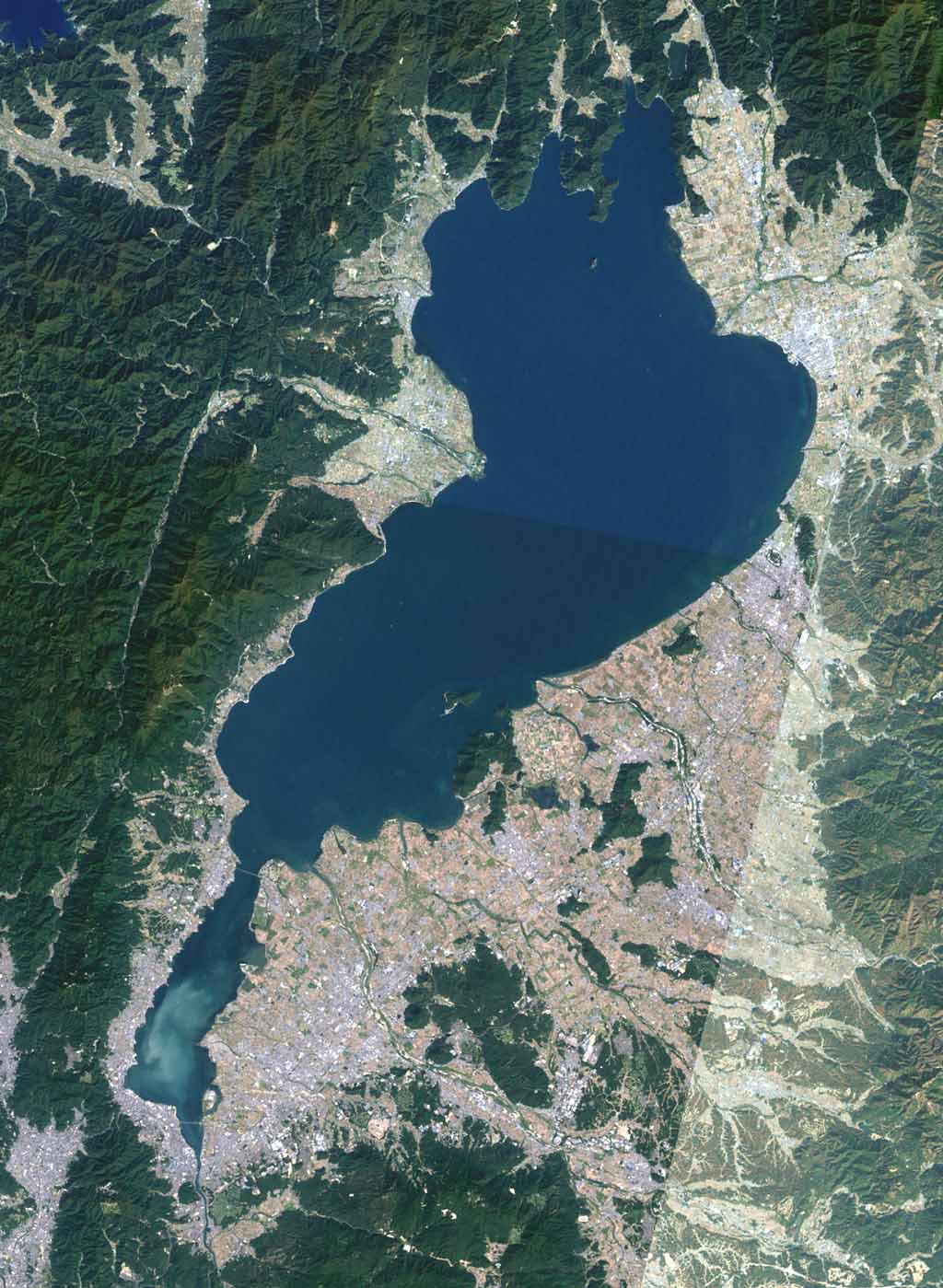|
Kijiya
are Japanese woodworkers particularly known as woodturners for their lathe-produced kokeshi dolls or lacquered goods. They are attested from the medieval period, claiming descent from the oldest son of Emperor Montoku, Prince Koretaka (844–897), whom they credit with the invention of the wood lathe (rokuro). Originally the ''kijiya'' occupied the more populous parts of central and southern Japan and are said to originate from a single village, Higashi-Ogura, in Kanzaki District, Shiga Prefecture, leading them to take on the surname, "Ogura". As migrant minority group they moved about in groups of a few families, collecting wood in the mountains. Contact between these groups was achieved through two shrines, enshrining the legendary princely ancestor. Shrine officials traveled through the country, collecting contributions and handing out licenses for collecting wood and for pursuing their profession. In 1872, 1536 families were managed by one of these shrines. In the course of t ... [...More Info...] [...Related Items...] OR: [Wikipedia] [Google] [Baidu] |
Kokeshi
are simple wooden Japanese dolls with no arms or legs that have been crafted for more than 150 years as a toy for children. Originally from the Tohoku region in northern Honshu, ''kokeshi'' are handmade from wood, having a simple trunk and head with a few thin, painted lines to define the face. The body often has floral and/or ring designs painted in red, black, and sometimes green, purple, blue, or yellow inks, and covered with a layer of wax. Since the 1950s, kokeshi makers have signed their work, usually on the bottom and sometimes on the back. History and etymology The origin and naming of ''kokeshi'' is unclear, with historical ateji spellings including 小芥子, 木牌子, 木形子, and 木芥子. The hiragana spelling こけし was agreed on at the All-Japan Kokeshi Exhibition (全国こけし大会) at Naruko Onsen in August 1939. A popular theory suggests that ''kokeshi'' may be fetish substitutes for unwanted babies killed after birth and the characters can be ... [...More Info...] [...Related Items...] OR: [Wikipedia] [Google] [Baidu] |
Woodturning
Woodturning is the craft of using a wood lathe with hand-held tools to cut a shape that is symmetrical around the axis of rotation. Like the potter's wheel, the wood lathe is a mechanism that can generate a variety of forms. The operator is known as a ''turner'', and the skills needed to use the tools were traditionally known as ''turnery''. In pre-industrial England, these skills were sufficiently difficult to be known as "the mysteries of the turners' guild." The skills to use the tools by hand, without a fixed point of contact with the wood, distinguish woodturning and the wood lathe from the machinist's lathe, or metal-working lathe. Items made on the lathe include tool handles, candlesticks, egg cups, knobs, lamps, rolling pins, cylindrical boxes, Christmas ornaments, bodkins, knitting needles, needle cases, thimbles, pens, chessmen, spinning tops; legs, spindles, and pegs for furniture; balusters and newel posts for architecture; baseball bats, hollow forms such a ... [...More Info...] [...Related Items...] OR: [Wikipedia] [Google] [Baidu] |
:Category:Japanese Words And Phrases ...
{{Commons Words and phrases by language Words Words Words A word is a basic element of language that carries meaning, can be used on its own, and is uninterruptible. Despite the fact that language speakers often have an intuitive grasp of what a word is, there is no consensus among linguists on its ... [...More Info...] [...Related Items...] OR: [Wikipedia] [Google] [Baidu] |
Medieval Japan
The first human inhabitants of the Japanese archipelago have been traced to the Paleolithic, around 38–39,000 years ago. The Jōmon period, named after its cord-marked pottery, was followed by the Yayoi period in the first millennium BC when new inventions were introduced from Asia. During this period, the first known written reference to Japan was recorded in the Chinese ''Book of Han'' in the first century AD. Around the 3rd century BC, the Yayoi people from the continent immigrated to the Japanese archipelago and introduced iron technology and agricultural civilization. Because they had an agricultural civilization, the population of the Yayoi began to grow rapidly and ultimately overwhelmed the Jōmon people, natives of the Japanese archipelago who were hunter-gatherers. Between the fourth and ninth centuries, Japan's many kingdoms and tribes gradually came to be unified under a centralized government, nominally controlled by the Emperor of Japan. The imperial dynasty es ... [...More Info...] [...Related Items...] OR: [Wikipedia] [Google] [Baidu] |
Emperor Montoku
(August 827 – 7 October 858) was the 55th emperor of Japan,Imperial Household Agency (''Kunaichō'') 文徳天皇 (55)/ref> according to the traditional order of succession. Montoku's reign lasted from 850 to 858. Traditional narrative Before Montoku's ascension to the Chrysanthemum Throne, his personal name (''imina'') was . He was also known as ''Tamura-no-mikado''Varley, p. 165. or ''Tamura-tei''. He was the eldest son of Emperor Ninmyō. His mother was Empress Dowager Fujiwara no Junshi (also called the Gojō empress 五条后), daughter of the minister of the left, Fujiwara no Fuyutsugu. Montoku had six Imperial consorts and 29 Imperial children.Brown, p. 285. Events of Montoku's life * 6 May 850 ('' Kashō 3, 21st day of the 3rd month''): In the 17th year of Ninmyō''-tennō''s reign (仁明天皇十七年), the emperor died; and his eldest son received the succession (''senso''). * 850 (''Kashō 3, 4th month''): Emperor Montoku formally acceded to the throne (''s ... [...More Info...] [...Related Items...] OR: [Wikipedia] [Google] [Baidu] |
Kanzaki District, Shiga
was a district located in Shiga Prefecture, Japan. As of 2003, the district had an estimated population of 41,048 and a density of 179.51 persons per km2. The total area was 228.67 km2. Towns and villages * Eigenji * Gokashō * Notogawa Mergers * On February 11, 2005 - the towns of Eigenji and Gokashō, along with the towns of Aitō and Kotō (both from Echi District), and the city of Yōkaichi, were merged to create the city of Higashiōmi. * On January 1, 2006 - the town of Notogawa, along with the town of Gamō (from Gamō District), was merged into the expanded city of Higashiōmi is a city located in Shiga Prefecture, Japan. , the city had an estimated population of 113,229 in 45771 households and a population density of 290 persons per km2. The total area of the city is . Geography Higashiōmi is located in east-centr .... Kanzaki District was dissolved as a result of this merger. Transition Light blue autonomies are Kanzaki District's town, deep bl ... [...More Info...] [...Related Items...] OR: [Wikipedia] [Google] [Baidu] |
Shiga Prefecture
is a landlocked prefecture of Japan in the Kansai region of Honshu. Shiga Prefecture has a population of 1,398,972 as of 1 February 2025 and has a geographic area of . Shiga Prefecture borders Fukui Prefecture to the north, Gifu Prefecture to the northeast, Mie Prefecture to the southeast, and Kyoto Prefecture to the west. Ōtsu is the capital and largest city of Shiga Prefecture, with other major cities including Kusatsu, Nagahama, and Higashiōmi. Shiga Prefecture encircles Lake Biwa, the largest freshwater lake in Japan, and 37% of the total land area is designated as Natural Parks, the highest of any prefecture. Shiga Prefecture's southern half is located adjacent to the former capital city of Kyoto and forms part of Greater Kyoto, the fourth-largest metropolitan area in Japan. Shiga Prefecture is home to Ōmi beef, the Eight Views of Ōmi, and Hikone Castle, one of four national treasure castles in Japan. History Shiga was known as Ōmi Province or Gōshū bef ... [...More Info...] [...Related Items...] OR: [Wikipedia] [Google] [Baidu] |
Shinto Shrine
A Stuart D. B. Picken, 1994. p. xxiii is a structure whose main purpose is to house ("enshrine") one or more kami, , the deities of the Shinto religion. The Also called the . is where a shrine's patron is or are enshrined.Iwanami Japanese dictionary The may be absent in cases where a shrine stands on or near a sacred mountain, tree, or other object which can be worshipped directly or in cases where a shrine possesses either an altar-like structure, called a himorogi, , or an object believed to be capable of attracting spirits, called a yorishiro, , which can also serve as direct bonds to a . There may be a and other structures as well. Although only one word ("shrine") is used in English, in Japanese, Shinto shrines may carry any one of many different, non-equivalent names like , , , , , , , , , or . Miniature shrines (hokora, ) can occasionally be found on roadsides. Large shrines sometimes have on their precincts miniature shrines, or . Because the and once had differe ... [...More Info...] [...Related Items...] OR: [Wikipedia] [Google] [Baidu] |
University Of California Press
The University of California Press, otherwise known as UC Press, is a publishing house associated with the University of California that engages in academic publishing. It was founded in 1893 to publish scholarly and scientific works by faculty of the University of California, established 25 years earlier in 1868. As the publishing arm of the University of California system, the press publishes over 250 new books and almost four dozen multi-issue journals annually, in the humanities, social sciences, and natural sciences, and maintains approximately 4,000 book titles in print. It is also the digital publisher of Collabra and Luminos open access (OA) initiatives. The press has its administrative office in downtown Oakland, California, an editorial branch office in Los Angeles, and a sales office in New York City, New York, and distributes through marketing offices in Great Britain, Asia, Australia, and Latin America. A Board consisting of senior officers of the University of Cali ... [...More Info...] [...Related Items...] OR: [Wikipedia] [Google] [Baidu] |
Meiji Restoration
The , referred to at the time as the , and also known as the Meiji Renovation, Revolution, Regeneration, Reform, or Renewal, was a political event that restored Imperial House of Japan, imperial rule to Japan in 1868 under Emperor Meiji. Although there were ruling emperors before the Meiji Restoration, the events restored practical power to, and consolidated the political system under, the Emperor of Japan. The Restoration led to enormous changes in Japan's political and social structure and spanned both the late Edo period (often called the Bakumatsu) and the beginning of the Meiji era, during which time Japan rapidly Industrialization, industrialised and adopted Western culture, Western ideas and production methods. The origins of the Restoration lay in economic and political difficulties faced by the Tokugawa shogunate. These problems were compounded by the encroachment of foreign powers in the region which challenged the Tokugawa policy of , specifically the arrival of the Pe ... [...More Info...] [...Related Items...] OR: [Wikipedia] [Google] [Baidu] |
Fukushima Prefecture
is a Prefectures of Japan, prefecture of Japan located in the Tōhoku region of Honshu. Fukushima Prefecture has a population of 1,771,100 () and has a geographic area of . Fukushima Prefecture borders Miyagi Prefecture and Yamagata Prefecture to the north, Niigata Prefecture to the west, Gunma Prefecture to the southwest, and Tochigi Prefecture and Ibaraki Prefecture to the south. Fukushima, Fukushima, Fukushima is the capital and Iwaki, Fukushima, Iwaki is the largest city of Fukushima Prefecture, with other major cities including Kōriyama, Aizuwakamatsu, and Sukagawa. Fukushima Prefecture is located on Japan's eastern Pacific coast at the southernmost part of the Tōhoku region, and is home to Lake Inawashiro, the fourth-largest lake in Japan. Fukushima Prefecture is the third-largest prefecture of Japan (after Hokkaido and Iwate Prefecture) and divided by mountain ranges into the three regions of Aizu, Nakadōri, and Hamadōri. History Prehistory The keyhole-shaped Ōya ... [...More Info...] [...Related Items...] OR: [Wikipedia] [Google] [Baidu] |







